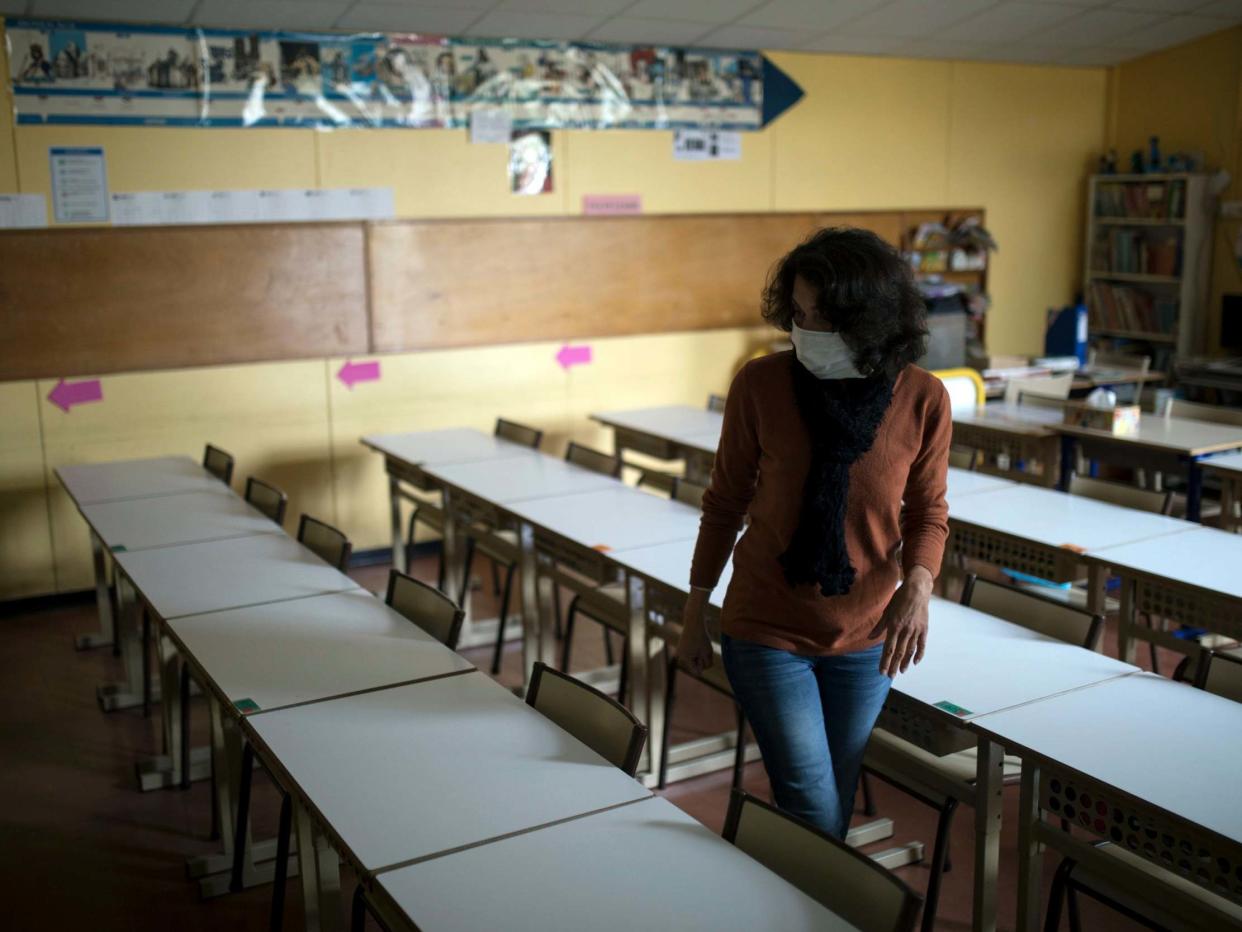Coronavirus: Classes should have only 15 pupils and drop off times staggered, new government guidance says

Classes sizes should be limited to 15 children, desks and pupils kept two metres apart, and drop-off and pick-up times staggered when primary schools return, new government guidance says.
The Department for Education (DfE) has set out its “ambition” for all primary-aged children in England to go back to school for a month before the summer holidays, including guidelines on how to implement social distancing.
The advice also includes introducing a one-way system or placing a “divider” down the middle of corridors, frequent handwashing, staggering break times, and removing soft furnishings and toys that are difficult to clean.
However the wearing of face masks are not recommended, unless a child falls unwell with symptoms of coronavirus.
The guidance states class sizes should be no more than 15 pupils with one teacher, or a teaching assistant if necessary, and that it would be “sensible” to rearrange classrooms to keep desks as far apart as possible – although the government acknowledged it may be difficult to keep young children separate at all times.
Children and staff should also only mix in a “small, consistent group” that “stays away from other people and groups” where possible.
Any setting that cannot achieve the guidelines set out is told to speak to its local authority or trust about other options – which could involve sending children to a nearby school.
The government hopes primary schools will be able to reopen to nursery, reception, Year 1 and Year 6, alongside priority groups, from 1 June at the earliest.
However this will only happen if the government is satisfied it is safe to do so, and will be kept under constant review.
The plans, published on Monday night as part of the government’s 50-page Covid-19 recovery strategy, have faced a backlash from teaching union chiefs, including Mary Bousted, joint general secretary of the National Education Union (NEU), who branded them as “nothing short of reckless”.
Paul Whiteman, general secretary of the National Association of Head Teachers (NAHT), meanwhile, said it seemed “wildly optimistic to the point of being irresponsible” to suggest the country will be in a position to return all primary children to school within the next seven weeks.
Concerns over PPE (personal protective equipment) in schools and keeping young children socially distant have previously been raised by Geoff Barton, general secretary of the Association of School and College Leaders (ASCL).
The same rules on halving class sizes will “normally apply” to secondary schools, sixth forms and colleges once they return, the government said.
Until then, they are being asked to offer some “face-to-face support” to Year 10 and 12 students who are due to take key exams this year, alongside remote learning.
Alternative provision settings should “mirror” the approach being taken for mainstream schools and also offer some face-to-face support for exam-year students.
Nurseries and other early year providers, including childminders, are being asked to “begin welcoming back all children”.
From 1 June, childminders can look after children of all ages, in line with usual limits on the number of children they can care for, if safe to do so, the advice stated.
Special schools, special post-16 institutions and hospital schools will work towards a phased return of more children and young people without a focus on specific year groups, it added.
Read more
Seven charts that show the true scale of the UK coronavirus outbreak
Which European countries are lifting coronavirus restrictions today?
The Americans who think that coronavirus is a hoax
How to feel less anxious about the coronavirus
Quarantine: What do new UK travel guidelines mean for my holidays?

 Yahoo News
Yahoo News 
